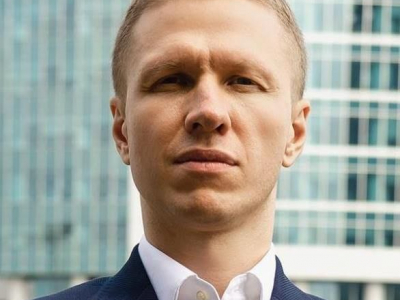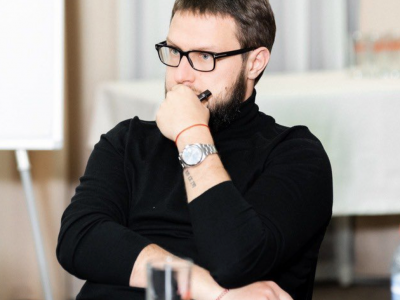In their Annual Report for 2015 McKinsey pointed out that the landscape of both the banking and non-banking sector is changing. At the turn of the year, CoinFox is asking which Ibero-American start-ups are to drive the change further in 2016.
According to McKinsey, payments are “at the epicenter of financial innovation… Nothing of note has been done, however, to improve the back-end systems and processes that enable cross-border payments to work.” Improving payment services has been one of the main arenas for development of bitcoin and blockchain start-ups in Latin America. Reporting on his observations from the Third Annual Latin American Bitcoin Conference in Mexico City, Trace Mayer reflected on the reasons for the increased bitcoin adoption in Latin American countries. In Mayer’s words “of anywhere in the world Brazil is probably where the most bitcoin activity is happening.” According to him, “the Brazilian market itself needs bitcoin” in order to help individuals as well as businesses to wire money internationally. Not only is bitcoin good for wiring but also for savings, as it counters the devaluation of national currencies and appeals to the unbanked population of countries such as Mexico, Argentina and Brazil.
Having in mind the growing importance of the Ibero-American Bitcoin communities and markets, CoinFox offers you its Top 6+ of Spanish and Latin American start-ups to watch in 2016:
BitPagos
BitPagos is a Bitcoin payment processor whose purpose is to bring easy electronic payments to Latin America. The company aims at facilitating small businesses to reach more clients internationally and to be able to execute cheaper, faster and safer transactions globally. In September 2015 BitPagos incorporated Unisend, the only online exchange for Argentinian peso and Bitcoin. According to the company’s blog, the consolidation of Unisend and BitPagos reflects the growing level of digital currency adoption (especially in Argentina during the last two years) and further confirms that “the emerging countries have become the key points in the development of the Bitcoin technology.”
SatoshiTango
In the words of its CEO Matias Bari, SatoshiTango is “a Bitcoin multiservice platform”. In July 2015 SatoshiTango was a finalist at Seedstarsbuenosaires. The Argentinian company has also partnered up with Mexican Volabit in order to create the money transfer service Coinnect, a collaboration that allows users of the Volabit wallet and of SatochiTango to transfer money easily between Mexico and Argentina.
Rootstock
A smart contracts peer-to-peer platform powered by bitcoin, Rootstock implements new functionalities on sidechains in order to stay secure and reliable. To ensure scalability, it uses tokens called Roots, which have no speculative value, live only on Rootstock’s blockchain and are convertible to bitcoins according to a fixed exchange rate. Among the founders of Rootstock we see the familiar name of Diego Gutierrez Zaldivar, a Co-Founder and President of Bitcoin Argentina and Bitcoin LATAM, CEO of Koibanx and one of the organisers of the LaBitConf. Gutierrez Zaldivar told IBTimes that the Rootstock’s idea is “to target specific needs that we detected in Latin America in different areas and also launch Rootstock with some real use cases; companies and organisations that want to start working on smart contract execution.” Importantly, Roodstock has also been talking to The World Bank and Banco Ciudad de Buenos Aires in order to find a solution to increase financial inclusion.
Bit2Me
Bit2Me’s aim is to “develop technological solutions to help democratize the use of cryptocurrencies.” The company won the world Fintech Americas 2015 by Visa and Cobiscorp, has been awarded as Best Spanish Startup 2015 by CaixaBank and Actualidad Económica, and has been invited by the European Commission as one of the five most important European bitcoin start-ups to participate in the Blockchain and Digital Currency Workshop.
Listed by Venture Watch as one of the most promising start-ups in Spain in February 2015, in October Bit2Me presented the mobile application Hive in Miami at the Fintech Americas and won a prize of $10,000. The purpose of Hive is to allow users to send and receive money through a social peer to peer network which facilitates the execution of payments, remittances, loans or investments. Hive is based on the blockchain technology and presents itself as “banking without banks”.
Most recently, this December, Bit2Me was given an award by the financial newspaper Expansión and Deloitte for its effort to innovate new business models, as demonstrated by the development of Hive.
Coinffeine
Another Spanish start-up which was invited by the European Commission to the Blockchain and Digital Currency Workshop is Coinffeine, an open source P2P bitcoin exchange platform. Coinffeine is a company of many firsts: shortly after it becoming the worlds’ first company to be established with bitcoins, in November 2014 Bankinter invested in the enterprise, thus becoming the first bank in the world to invest in a bitcoin company. And finally, in July 2015 the company launched the world’s first decentralised bitcoin exchange, which is available in Beta version in more than 70 countries.
Stampery
Deemed “the notary of the future” by El País, Stampery is the latest start-up created by Luis Iván Cuende, a 20 year old Spaniard who was proclaimed the best European adolescent hacker in 2011. Together with his partner Daniele Levi, Cuende uses bitcoin’s blockchain to verify documents authenticity. After becoming a select finalist at the TechCrunch Disrupt Battlefield competition in San Francisco, Stampery raised $600,000 and was endorsed by the law firm FourLaw and the techno artist Alex Under, among others.
For those whose curiosity has not been yet satisfied, it is also worth checking Wayniloans, the first community of user-to-user bitcoin loans in Latin America, as well as the ever expanding Catalonian bitcoin ATM service Bitchain.
Diana Bogdan


















Comments